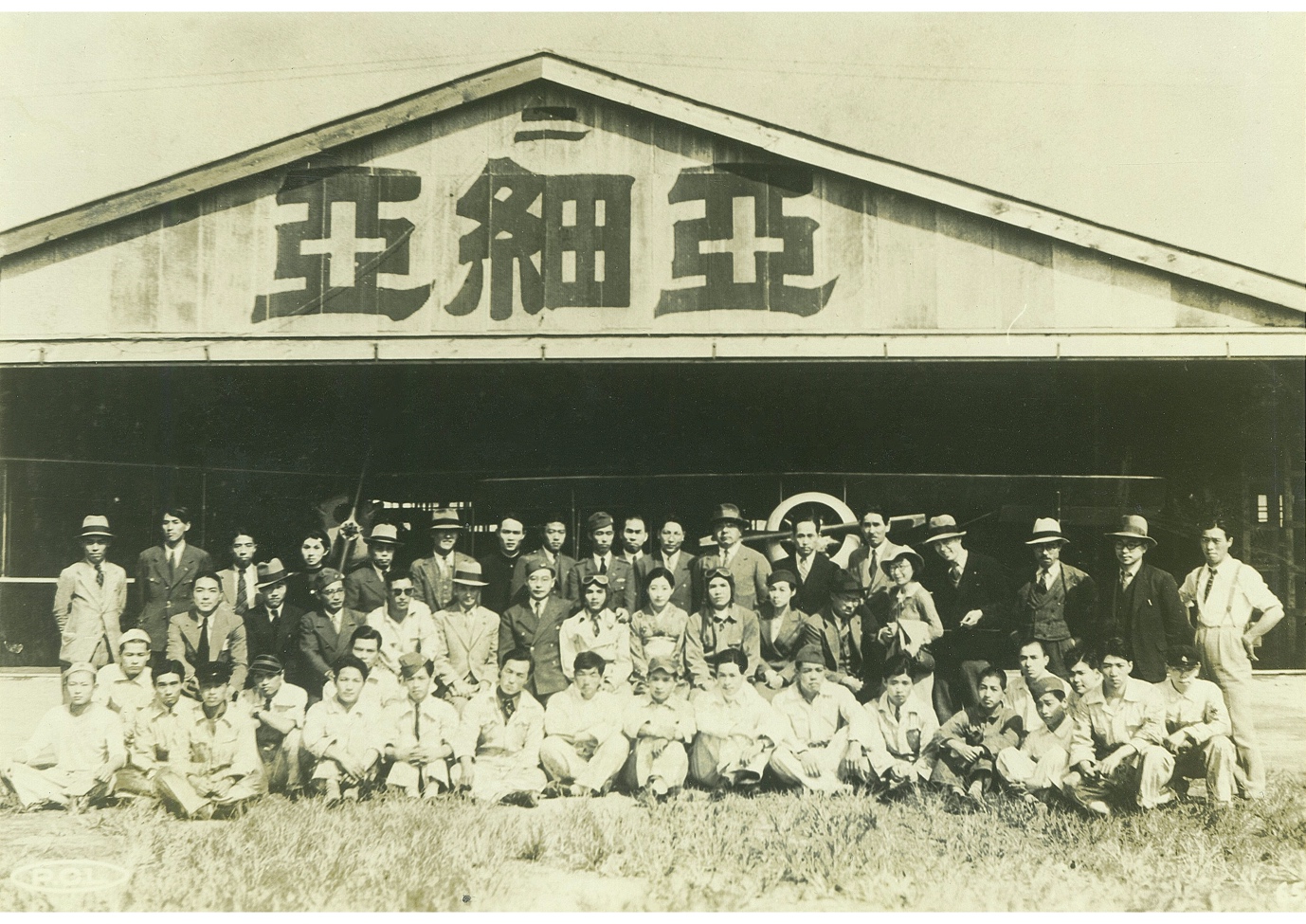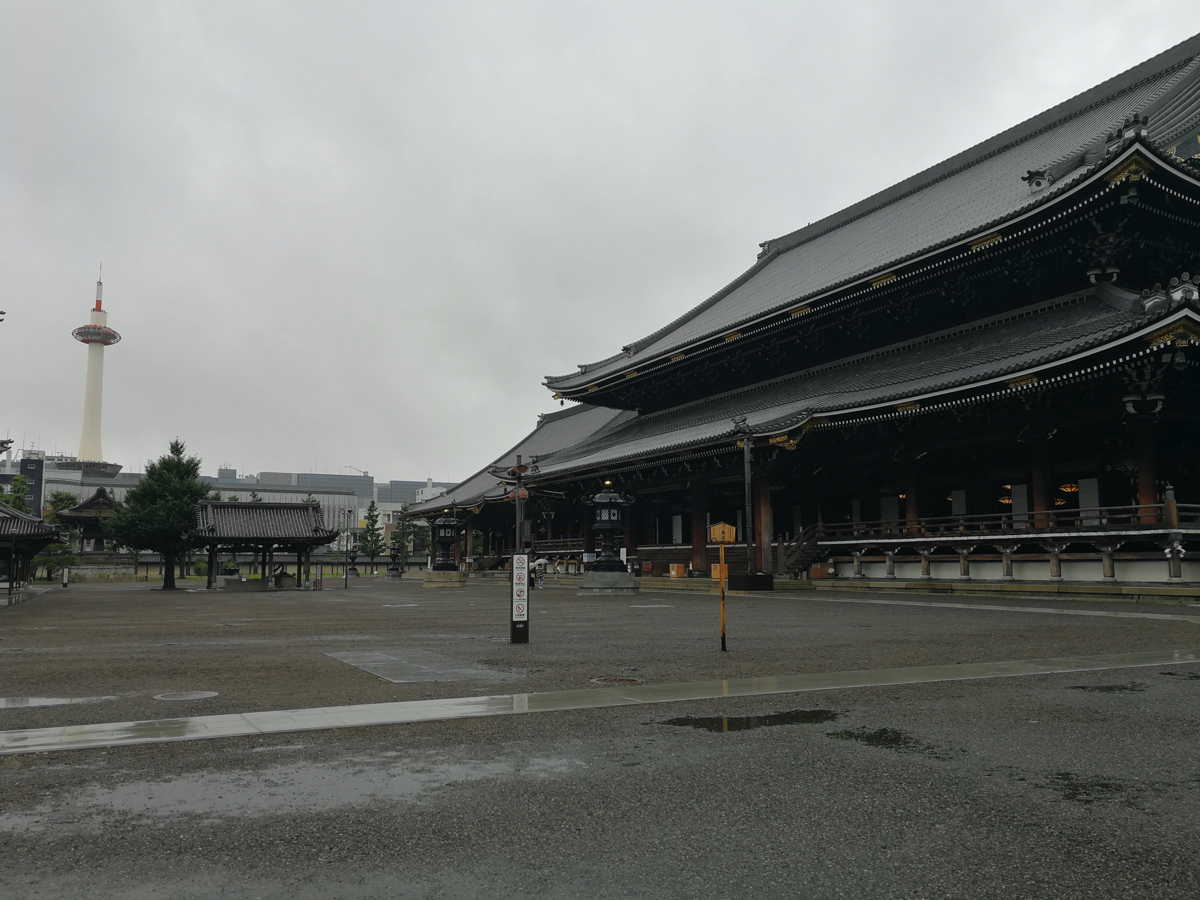Two handsome young pilots, in leather flight gear, with billowing scarves and aviator goggles climb aboard their aircraft, named Myanma Gone Yee (မြန်မာ့ဂုဏ်ရည်) ‘The Spirit of Myanmar.’ The year is 1935, and these Burmese aviators are about to fly the first non-stop flight from Tokyo to Rangoon. One of the pilots has a Japanese lover, Emiko-san, who tearfully waves goodbye as the plane disappears on the horizon. The woman collapses at the airfield, but dies peacefully when she hears on the radio that her lover’s flight successfully landed in Burma; a tearful and tearful tragic ending to the transnational romance. Alas, the movie Japan Yin Thwe (ဂျပန့်ရင်သွေး) also called Nippon Musume (日本娘 ), ‘Japanese Darling,’ ends in heartache.
Learning more about this film, its context, along with those of many others, was my research plan for my six months at Kyoto University Center for Southeast Asian Studies. My project, Silver Screens and Golden Dreams: A Social History of Burmese Cinema, draws upon interviews, screenings and a personal collection of books and magazines which I had been accumulating rather haphazardly through collecting materials and ethnographic experiences over the past 15 years of trips to Myanmar. The challenge would be to collate all this information. So, last January, I took two heavy suitcases laden with books, magazines, and photocopies to Kyoto, looking forward to having the chance to explore the resources at the CSEAS library. From the Burmese collection, I found a number of books not catalogued in any other library connected to WorldCat. Some of them even bore the stamp of Myo Hlaing, a.k.a. ‘Japan Gyi,’ (Great Japan) a book dealer in Yangon locally famous for helping out Japanese researchers in Myanmar. However, it would not only be the library books that connected Kyoto to the history of Burmese film: there was another personal connection that I discovered, and that was through learning more about the movie, Japan Yin Thwe, a co-production between Burmese and Japanese filmmakers.

The cast and crew of Japan Yin Thwe at the Asia Aviation School
(Photo courtesy of Mr. Tatsuo Kogure).
In the 1930s, Japan Yin Thwe did not start as a movie project per se. It started as a mission of two Burmese filmmakers -- Nyi Pu and Tin Pay from Burmese A1 studios -- to travel to Japan, purchase equipment and acquire skills in sound-on-film production. It was in Tokyo that they met with the owners of Photo Chemical Laboratories, or PCL the precursor to Toho Studios. After touring the facilities, they proposed an idea of co-producing a film in Japan. PCL organized the casting, production and post-production. For the aviation scenes, these were filmed at Asia Aviation School (亜細亜航空学校 ). Filming included two of the school’s aircraft. They even hired Filipino studio musicians for the soundtrack. The movie included scenes in Burmese (with Japanese subtitles), Japanese (with Burmese subtitles) and some brief exchanges in English.

My visit to the Kyoto temple where Nyi Pu and Takako Suzuki were married.
When A1 launched the film on 25 November 1935 at King Cinema and Olympia Cinema in Rangoon, it was an instant hit among Burmese audiences. The film would later be shown in Japan, as well as in Bangkok. Riding the waves of the film’s box office success in Burma, the exotic allure of Emiko-san inspired several kinds of unique merchandizing in the Burmese marketplace. Although the female lead in the movie was named Emiko-san, for Burmese audiences she was referred to as Aye Mi San. Soon, women could buy their own ‘Aye Mi San’ facial powder or ‘Aye Mi San’ skirts. Burmese entrepreneurs even marketed ‘Aye Mi San’ mosquito coils.
Despite the tragic end to the romance on screen, there was a different ending to the story of the Burmese men in Japan off-screen. While the characters Ba Tay and Emiko San were falling in love on the screen, Nyi Pu and another Japanese woman, Takako Suzuki fell in love off-screen. As they got to know each other, they initially relied on PCL sound engineer Koji Ichikawa to translate for them. Nyi Pu stayed on in Japan after the filming, and he and Suzuki got a home in the Shinjuku area of Tokyo.
When Nyi Pu proposed marriage to Suzuki, initially his Japanese fiancé’s parents were wary at the prospect of their daughter marrying a Burmese man. Not knowing his background and concerned that he might already be married, Suzuki’s mother made contact with Nyi Pu’s family in Rangoon regarding his bachelor status. When this was confirmed, with the added information that Nyi Pu’s father was the owner of the largest Burmese-owned department store (Myanmar Aswe), Mrs. Suzuki’s reservations about Nyi Pu seem to have faded.
The young transnational couple was married in late 1935. Suzuki wore a white kimono, and Nyi Pu was also dressed in a kimono for the ceremony. In February 1936 the young international couple departed Japan for Southeast Asia, leaving Yokohama by steamer, and settling in Rangoon at the A1 Studios campus. They had a baby girl in June 1936, and would later have a son in September 1937. Their children spent their youth in the A1 compound. Suzuki found that with the success of Japan Yin Thwe the movie among the Burmese public, she acquired the name Aye Mi San. She was never able to shake that nickname, despite the fact that she was not the actress in Japan Yin Thwe. To the Burmese public’s mind, she was a Japanese woman married to U Nyi Pu, the Burmese movie star, so she must be Aye Mi San.

Higashi Honganji Temple in Kyoto
Through a friend in the Burmese community of writers in the Washington DC area, I was introduced to Nyi Pu and Takako Suzuki’s son: a retired computer engineer living in Virginia named U Aung Pe. Over numerous chats online he has been wonderfully helpful and supportive of this research project. While I am learning about A1 through old films, interviews, magazines and books, for U Aung Pe, this is his youth growing up on the movie-making campus of A1 Studios, often called the Hollywood of Burma. As a young adult, he worked as a studio manager for his father before leaving Burma for the United States in 1968. During my time in Kyoto, I learned from U Aung Pe that the site of his parents’ wedding ceremony was the Higashi Honganji Temple in Kyoto.
Toward the end of my stint at CSEAS, while the city was in ‘lockdown lite’ I made a special trip to Higashi Honganji Temple, just north of Kyoto Station to explore the temple grounds and revisit the place where U Aung Pe’s parents tied the knot. I took some photos, including a souvenir selfie or two. I also let U Aung Pe know of my visit, and my making a special wish there for continued happiness, good health and friendship across the seas.
